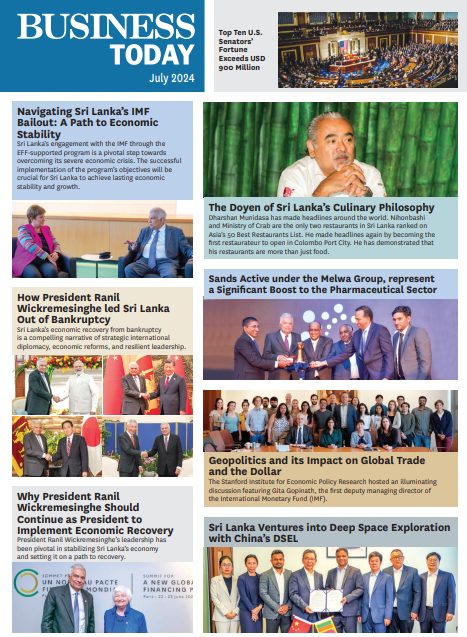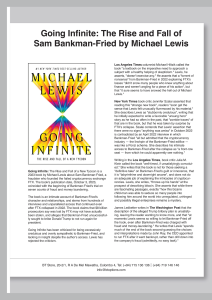The word STRATEGY has become colloquial in usage today; as a word loosely used today, and also commonly used in places where it should not be. Often when we need to perform a task or improve something, we use the phrase ‘We must have a STRATEGY’.
By ASANGA RANASINGHE
President of CIM Sri Lanka
Executive Director/Chief Marketing Officer of Diesel & Motor Engineering
However, STRATEGY has a broader and deeper meaning than its current use. Its intended purpose is very different from current understanding. This diffused knowledge results in a negative impact on some of the practices, thinking processes and actions adopted by leaders and their teams in organisations today.
In fact, some leaders and teams go to the extent of complaining that STRATEGY has no bearing on business results and blame STRATEGY.
In my opinion, the primary reason is due to leaders lacking in understanding of the notion of STRATEGY, and also they do not act on the wisdom and teachings of STRATEGY.
Thus, this article aims to clarify the basics of STRATEGY and help leaders craft and execute a STRATEGY to win, especially in the market place.
Firstly, let us focus on a basic question, which we often do not ask – ‘What is a STRATEGY?’
What Is STRATEGY? Many Are Under The Perception That STRATEGY Is All About Making Improvements. However, Is It Not True That Improvements Are Essential To Enhance Productivity And Day-To-Day Activities?
STRATEGY: IS IT OPERATIONAL EFFECTIVENESS?
What is STRATEGY? Many are under the perception that STRATEGY is all about making improvements. However, is it not true that improvements are essential to enhance productivity and day-to-day activities?
None would concur that we should not make improvements to what we do daily. We must relentlessly strive to improve what we did yesterday, today and continue tomorrow.
This is Operational Effectiveness (OE). It is about doing things more effectively and/or efficiently today than yesterday. OE needs to be embedded in the workings of an organisation, and it is something we need to do every day.
Management tools and techniques such as Total Quality Management, Total Productive Maintenance, 5S, 6-Sigma will undoubtedly have a significant impact on improving business operations and processes and yield good results.
Moreover, some consultants and companies can assist businesses to implement these programs. However, all that is available to one company is also available to all others, and the only differentiating factor will be the level of execution. This kind of operational effectiveness and improvements in doing things better is necessary but not sufficient to compete in today’s highly competitive market.
It is widely accepted that the business world has never been as complex as it is today; customers are becoming savvy, and rivalry among competitors is getting intense daily. Hence being better or being the best is necessary but not sufficient for long term value creation. Businesses must strive to be unique or different to create value consistently for customers, employees and shareholders. Sadly, leaders of today are mindlessly focused to be the best and to beat the competition by concentrating only on OE as the driver of creating superior value.
While engaging in benchmarking, they become more indistinguishable. Businesses become similar, and they lose their individuality. In other words, when more things are done in terms of improvements such as outsourcing, the outsourcing company improves in terms of job performance and the businesses becomes more generic vis-à-vis the competitors.
That uniqueness of the business or the differentiator is lost when the focus is relentlessly to beat the competitor especially by trying to be better through OE. Companies need to improve operational efficiency every day, but this should not be its ‘STRATEGY’.
Therein lies the difference between Operational Effectiveness and STRATEGY. Operational Effectiveness is all about trying to perform the Value Chain Activities more efficiently and effectively than competitors. When a business becomes better than its rivals in its value chain, it is called improving Operational Effectiveness. STRATEGY, however, is not about being better; instead, it is about being different.
STRATEGY Is Doing Things Differently And Doing Different Things To Achieve A Sustainable Competitive Advantage.
WHAT IS A STRATEGY?
STRATEGY is doing things differently and doing different things to achieve a sustainable competitive advantage. Though simple, it is not well understood.
STRATEGY is not about doing things better. STRATEGY is the creation of a unique position – a position in the minds of the customers and other stakeholders. Dilmah, Apple, Air BNB, Uber, Tesla – they are all different, each one has a unique position. This unique position is created only by crafting and executing a brilliant strategy.
STRATEGY requires three key principles. Firstly, a strategy needs to create a unique and valuable position through a different set of activities performed by the organisation. Secondly, it requires trade-offs to be made, deciding on what to do and what not to when competing in the market. Lastly, a strategy needs to create a ‘fit’ among the company’s activities.
STRATEGY RELIES ON A DIFFERENT SET OF ACTIVITIES
The best example to illustrate that STRATEGY should rest on a unique set of activities is to study Southwest Airlines, which was the first mover in introducing low-cost air travel to the world.
They realised that people have to travel to one place from another, that most people do not need great food and neither do they opt for the best of wines. All this can be enjoyed when they are not travelling! Instead, people come to an airport to travel – from one place to another – at the cheapest possible fare, to get to their destination on time, at a convenient time, with the best possible connection. Southwest Airlines did all that. They introduced the world to low cost, convenient air travel!
The whole positioning was based on low cost, convenient travel. The world had never thought about this before as air travel was expensive. Very few people would fly because many could not afford it. Also, timings and connections were not convenient.
Southwest saw this as an opportunity and consciously chose a different set of activities to deliver ‘low-cost convenient travel’ to its customers. Southwest selected airports and routes to avoid congestion and worked on rapid gate turnaround, which allowed them to facilitate frequent departures and greater use of aircraft.
Even today, they adopt strict limits on the type and length of routes to make standardised aircraft possible. Facilitating automatic ticketing at the gate, they encourage customers to bypass the travel agents and avoid paying commissions. They also did not offer meals, seat assignment and internal baggage transfers to ensure the cost was low. Of course, this was a challenge for full-service airlines as they could not perform these activities to secure a differentiated positioning. Southwest airline was able to establish a unique low-cost, convenient travel position by performing these activities differently than its competitors.
STRATEGY: IT’S ALL ABOUT TRADE-OFFS
In today’s business world we often witness that most leaders want to do everything, despite knowing full well that we cannot do everything, and we cannot be everything to everybody. It is evident that we can be something to somebody which means some competitive activities are incompatible. Therefore, gains in one area can be achieved only at the expense of others, known as Trade-offs. Business leaders have a pivotal role in understanding this and deciding on trade-offs.
The ideal example to explain trade-offs is Neutrogena, a brand positioned as a medicinal product that delivers the promise ‘kind to the skin’. For instance, unlike other products in the category frame of reference, Neutrogena accomplishes this strategic position preceding manufacturing efficiencies, achieving the desired attributes of its soaps and their marketing strategy looks more like a drug company.
With the strong equity of the brand, it would have been tempting for Neutrogena to look at line extensions as part of its brand architecture to get into fields such as perfumery. But they chose not to. They are very clear in terms of their positioning and are also very clear in terms of STRATEGY. They do not want to blunt this differentiation. Thus, it is about trade-offs.
The Strategy also involves understanding what you are good at – mostly what you are best at – and being unbeatable in that realm and understanding what you do not do equally well.
World-renowned Continental Airlines is an ideal organisation to explain this phenomenon. The Airline manages a very successful full-service airline with good market share. Their flights are mostly long haul with the best of privileges offered to customers.
Based on this success, Continental saw an opportunity to attract the bottom-end traveller by introducing a low-fare airline. The leadership thought, since they were doing well, as a full-service airline, with a strong brand, with the best of people, processes and technology, why not offer a low-cost airline as well.
They also thought if Southwest can do it, they can too. They were of the syndrome like most other leaders, ‘We are good in this, so we can be good in the other one also’. Sadly, the new venture turned into a disaster! It did not work because Continental could not be both. They struggled to be the best full-frilled airline and be the best low-cost airline at the same time!
The Power Of People Is Higher When They Come Together And Support The Leadership And When That Happens In Organisations It Is Immeasurable!
This is not STRATEGY.
STRATEGY is about trade-offs and about being clear on what the business should not be doing.
This is a clear lesson for business leaders today, who most often than not say ‘yes’ to everything that comes by. Their thinking is based on the belief, ‘I have done many things in my career, and hence I can do anything and everything’. Today, leaders want to do everything to please people and do not say no. This kind of thinking is entirely against STRATEGY as STRATEGY is all about occupying a unique position in the minds of the target customers for sustainable competitive advantage. The moment a choice is made to fill a unique position it is not possible to be anywhere else. This is where leaders have to make trade-offs.
CREATING A STRATEGIC FIT
Once leaders decide on a STRATEGY, among the critical roles of leadership is to enlist the entire organisation around this chosen strategic roadmap. Most of the time strategies are created in boardrooms, and its people are not engaged. The strategy has to be simple and remembered to enlist people. The power of people is higher when they come together and support the leadership, and when that happens in organisations it is immeasurable!
Everywhere and in every process – whether in IT systems, Enterprise Resource Planning (ERP), performance evaluations or goal setting – everything should be linked to STRATEGY. This is called creating a strategic fit.
This kind of strategic fit provides direction and links the company activities interdependently with each other with the sole objective of building economic value for all its stakeholders. Fit eliminates imitators by creating a chain that is strong but only as strong as its weakest link.
BIC is a brand that produces low-cost pens to attract low-end customers. The company has achieved this by creating a strategic fit by focusing on the cost drivers across its value chain from low-cost manufacturing processes, product design that emphasises the ease of manufacturing, aggressive purchasing to minimise material cost and in-house parts production.
They introduced the BIC pen, the BIC razors – the disposable razors – and all forms of low-cost consumer products, their target customers could afford. You do not want to carry a BIC pen in your pocket – it is not a ‘self-esteem’ need they were planning to meet. BIC is clear in its brand positioning. They do not want their target customers to use a BIC razor over and over again as it is a disposable razor. But it is attractive to the target segment at the bottom of the pyramid. That is how BIC became the pioneer of disposable technology!
GETTING STRATEGY RIGHT
In today’s hypercompetitive world, businesses are under pressure to grow. Most companies enter different sectors for the sake of achieving growth. With enthusiasm to improve, companies introduce variants, enter new categories or launch products in new markets without a long-term strategic intent. Most often than not the consideration is others – if others have got into it we can do it too, and we also execute it. Companies then become the same as their competitors, and this is not a STRATEGY.
Today most of the organisations do not pick and choose what fits their businesses best, based on their core competencies – processes, people and work culture. Instead, by trying to do many things without selecting the best fit, they end up slashing innovation budgets and cutting marketing expenditure of their core businesses. They even cut training and development which will often lead to strategic failure. Organisations take all these moves without fully understanding their own STRATEGY!
In Short, STRATEGY Is About A Unique Position. STRATEGY Is About Trade-Offs. STRATEGY Is About Creating A Fit In The Organisation. Can You Generate That Fit With The Culture You Have? If The Answer Is No, Do Not Do It.
Today more and more companies work with consultants on crafting strategies, which often prescribe various approaches to STRATEGY – These consultants often opine, ‘Look at your value drivers, look at your key challenges, look at your must-win-battles!’ These models are new to most leaders, and they love these buzz words and embrace them.
Subsequently, leaders ensure the entire organisation fill an endless number of forms. Finally, this results in ‘big book reports’ and not engaging people about the strategy. Soon after, the ‘big book report’ is forgotten. People get into a cycle where they continue to do things as and when they come and in their own way, and life persists unchanged.
Leaders forget to ask themselves whether they have the right STRATEGY. Whether through that STRATEGY they help their businesses to occupy a unique position in the market? When formulating the STRATEGY have leaders been bold enough to make trade-offs? Is the entire company, in terms of structure, activities and commitments aligned with their STRATEGY? If any of the answers are ‘no’ leaders need to rethink. This is the foundation upon which STRATEGY is built.
Leaders need to understand that STRATEGY should be created with a fair and open process by enrolling the right people across the organisation. When leaders get the right STRATEGY with the people on board, the project management techniques of the company also need to come into play to brilliantly execute the STRATEGY. Leaders cannot leave it to executives to oversee the implementation plan.
ROLE OF LEADERSHIP IN EXECUTING A STRATEGY
STRATEGY and leadership need to go hand in hand. Without strong leaders, a plan cannot be crafted or executed. Sometimes organisations have good STRATEGIES, but they cannot be implemented as leaders have not engaged the people in the strategy crafting process. Hence, in today’s business world leadership has become vital than ever before to craft and execute a strategy.
Leaders need to understand what leadership is really about as most leaders often misunderstand their role. They think leadership is only about doing things better as opposed to doing things differently or doing different things. Some even believe leadership is about command and control as opposed to influencing and inspiring people. Leadership is about building self and the team and getting the best out of the group, not about merely getting rid of people.
Leadership intervention is necessary for setting up cross-functional project teams to execute the strategy. Set and track key performance indicators and hold people accountable in terms of sticking to the plan. If leaders do not give STRATEGY execution due importance, their company will be seen as not being serious enough to make the required changes and the sacrifices necessary to execute STRATEGY.
REDISCOVER STRATEGY
We as leaders need to rediscover STRATEGY. To make sure that we have got it right, firstly we need to ask ourselves what the unique position we are trying to build for our organisation is? Secondly, it is about the trade-offs: what is it that we should do, and what is it that we should not. Thirdly, we need to check the pulse of the people and the culture of the company: can we create a fit? Do we have the core competencies?
We cannot be everything we want. We need to choose what we are good at.
STRATEGY is all about deliberately choosing a different set of activities or doing different things.
In short, STRATEGY is about a unique position. STRATEGY is about trade-offs. STRATEGY is about creating a fit in the organisation. Can you generate that fit with the culture you have? If the answer is no, do not do it.






